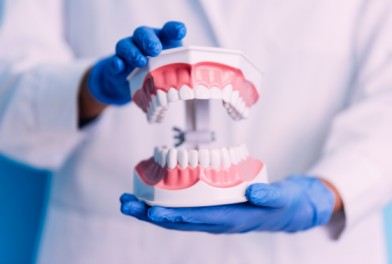Palatal Expanders – Uses, Types, and What to Expect
Palate expanders… the uses, types, what to expect and more.
Palate expanders fix and prevent common dental conditions. They are simple oral devices. They are often called palatal expanders, jaw expanders, and/or orthodontic expanders. These expanders make a proper amount of space in a child’s mouth. It works by slowly widening the upper jaw over time.
The Uses of A Palatal Expander
Here are some situations in which an expander would be used or recommended by your orthodontist:
- Crowding – Crowding of the teeth is the most common problem associated with the need for orthodontic treatment. Many factors contribute to dental crowding. The most common reason for crowding is a discrepancy between the space available in each jaw and the size of the teeth. Crowding can lead to impacted teeth, a “bad bite”, and an unesthetic appearance.
- Crossbite – Sometimes a child’s upper jaw is too narrow. This causes it to not fit properly with the lower jaw. Luckily this can be corrected by utilizing an expander to correct the upper jaw.
- Impacted Teeth – Sometimes teeth can collide as they come in. When an adult tooth has not erupted but is blocked by other teeth, an expander can create the space needed. With this newfound space, the adult tooth will have the proper amount of room to erupt more properly.
The Types of Palatal Expanders
There are different types of expanders, here are a few:
- Removable palate expander – If your child only needs a short distance of expanding, this may be the best option. This type of expander is worn 24/7 but is taken out during high-level activity, brushing, and eating meals.
- Hyrax rapid palatal expander– IThis expander is a fixed palette. It had bands that fit perfectly on each individual molar. Bands will be glued into place on the back teeth. This fully secures the fixed expander. The Hyrax has a screw in the center. This is located under the roof of the mouth. You will be given a key to turn the screw with proper instructions on the use.
- Quad helix appliance – This expander is also fixed and glued. It is situated onto the mouth’s roof while in a compressed. Rather than using a key, this expander opens up on its own over time.
- Haas expander –Bonded to the back molars, this expander is also fixed. A screw sits in the center of an acrylic plate. This expands when the screw is adjusted. Pressure is put on the palate and the teeth, therefore, causing the expansion.
What to Expect If you Get a Palate Expander
Your mouth is likely to feel sore. You may also feel some pressure at times, especially after an adjustment. Luckily, the discomfort is much lower on the scale compared to braces. It may feel different speaking and eating at first, but you will be quick to adapt. It is also normal to have a possible gap develop in the front teeth. This is okay since braces will be a part of the process in the future. When the expander has completed its time, all permanent teeth should be aligned with just enough space between each tooth.
Conclusion
If you are thinking about expanders or would like to see if your child is a candidate, a free consultation with our team of professionals and we’ll help your child on their journey to desirable teeth.






